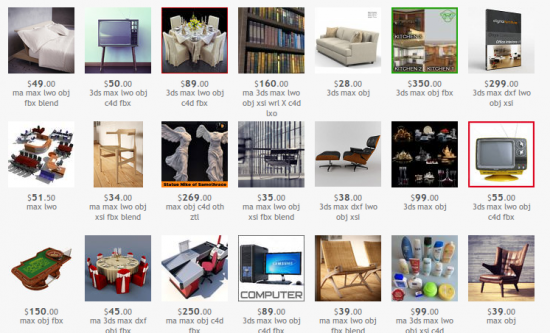I’ve been reading lately about how great mesh will be for Second Life.
But I’m wondering whether it won’t actually be better for OpenSim, instead.
Off-world content versus in-world content
In Second Life, the most common imported content is textures. But it costs money to bring them in — an easier alternative is to pick up texture packs in-world from freebie stores.
Exporting content is difficult and constrained. You can only export objects that you yourself have created, using a single avatar, and without using any third-party content — even if the copyright has been assigned to you or the content is Creative Commons licensed.
As a result, Second Life users pretty much live within Second Life. Yes, designers go off-world to create their custom textures and their sculpties. But, for the average user, everything they need is right there in Second Life.
That isn’t the case in OpenSim.
Schools and companies setting up private grids have to figure out how to export content from Second Life, or they hire designers and get the content in the form of OAR or IAR files. They can also make backup of entire regions or user inventories at will.
As a result, much more of their content exists outside the virtual world itself, stored on their hard drives.
There’s a bit of a mental shift involved in going from a Second Life region to owning a private OpenSim grid — it’s kind of like having a Facebook page versus running your own website. The possibilities open up, and you’re no longer constrained by the Facebook page layout.
Mesh exists outside of Second Life. Schools and companies that buy mesh objects will find themselves accumulating 3D content that’s stored on their hard drives. Content that they buy with real money, not Linden dollars. Content that they have full rights to — not just the rights spelled out in the Linden Lab terms of service. Â And Second Life will start losing its status as the preminent source of 3D content for virtual builds.
Might as well jump
Every new item of 3D content a school or company buys makes it that much easier to leave Second Life for OpenSim.
Content in Second Life comes with onerous digital rights management. Even content that’s fully licensed, with exports allowed, cannot be legally downloaded out of Second Life.
That might not be much of a problem for retail users of Second Life, but is a big issue for enterprise users, where significant amounts of money may be invested in virtual builds.

The situation is different for 3D content that’s sold in mesh format from sites like TurboSquid, GamePrefabs, and 3D Total, or offered for free from Google’s 3D Warehouse, 3D Repository,  or Archive3D (many more sites listed here). Here, the licensing terms are designed for enterprise use, and there are no digital rights management restrictions.
You download the content, and as long as you use it in accordance with your license, you’re free to save it where you want, share it with your staff, use it across your company grids, and keep as many backups as you’d like.
Once you have all this content, however, you can just as easily upload it to your OpenSim grid as to your Second Life region.
Level the playing field
Schools and enterprises typically don’t miss Second Life’s large user population when they move to OpenSim — after all, they will typically be using their virtual land for internal meetings, training simulations, and classes. Second Life’s user base is a distraction and a security threat more than a benefit.
However, they do miss Second Life’s large variety of ready-built, low-cost content.
Once mesh is finally enabled, however, Second Life loses its content advantage. There is much more 3D content available outside of Second Life than will be, especially at first, available within Second Life.
A brand-new OpenSim build could look as nice as one in Second Life.
And this doesn’t just apply to school and company grids. Commercial role playing and social grids can also take advantage of readily available 3D content to make their worlds more attractive to visitors.
- OSgrid back online after extended maintenance - April 16, 2025
- Analysts predict drop in headset sales this year - March 25, 2025
- OSgrid enters immediate long-term maintenance - March 5, 2025
